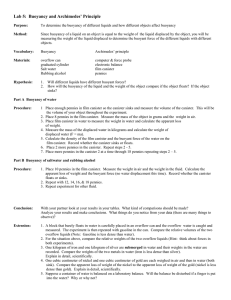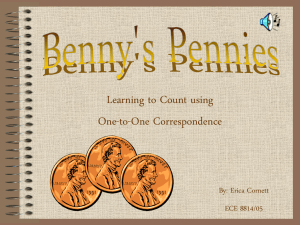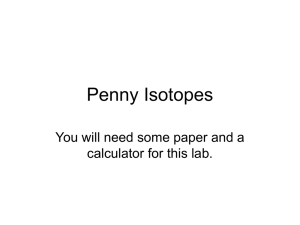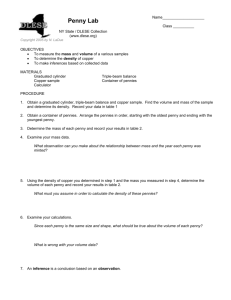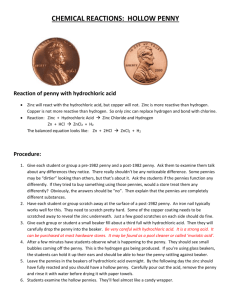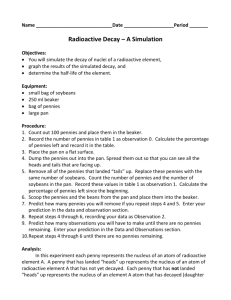Isotopes of Pennies
advertisement
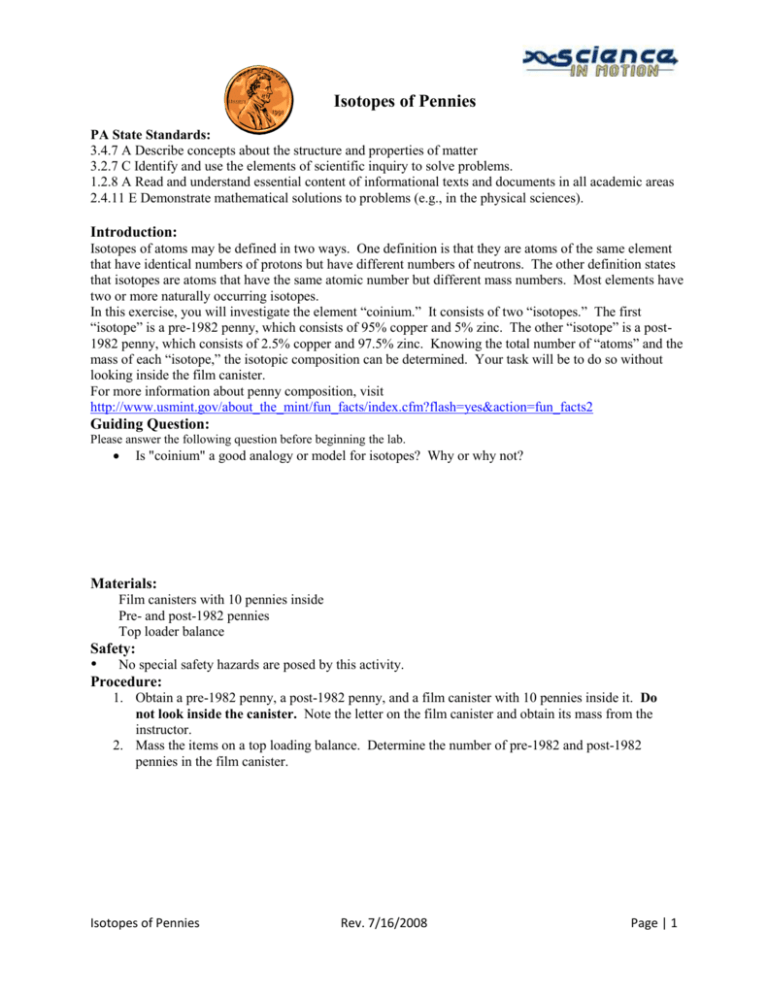
Isotopes of Pennies PA State Standards: 3.4.7 A Describe concepts about the structure and properties of matter 3.2.7 C Identify and use the elements of scientific inquiry to solve problems. 1.2.8 A Read and understand essential content of informational texts and documents in all academic areas 2.4.11 E Demonstrate mathematical solutions to problems (e.g., in the physical sciences). Introduction: Isotopes of atoms may be defined in two ways. One definition is that they are atoms of the same element that have identical numbers of protons but have different numbers of neutrons. The other definition states that isotopes are atoms that have the same atomic number but different mass numbers. Most elements have two or more naturally occurring isotopes. In this exercise, you will investigate the element “coinium.” It consists of two “isotopes.” The first “isotope” is a pre-1982 penny, which consists of 95% copper and 5% zinc. The other “isotope” is a post1982 penny, which consists of 2.5% copper and 97.5% zinc. Knowing the total number of “atoms” and the mass of each “isotope,” the isotopic composition can be determined. Your task will be to do so without looking inside the film canister. For more information about penny composition, visit http://www.usmint.gov/about_the_mint/fun_facts/index.cfm?flash=yes&action=fun_facts2 Guiding Question: Please answer the following question before beginning the lab. Is "coinium" a good analogy or model for isotopes? Why or why not? Materials: Film canisters with 10 pennies inside Pre- and post-1982 pennies Top loader balance Safety: No special safety hazards are posed by this activity. Procedure: 1. Obtain a pre-1982 penny, a post-1982 penny, and a film canister with 10 pennies inside it. Do not look inside the canister. Note the letter on the film canister and obtain its mass from the instructor. 2. Mass the items on a top loading balance. Determine the number of pre-1982 and post-1982 pennies in the film canister. Isotopes of Pennies Rev. 7/16/2008 Page | 1 Juniata College Data Table Mass of pre 1982 penny Mass of post 1982 penny Mass of film canister (on canister) Mass of canister and 10 pennies Mass of 10 pennies Number on film canister used __ Calculations: 1. Determine the mass of the 10 pennies by subtracting the mass of the film canister from the mass of the canister and pennies. 2. Determine the number of pre and post 1982 pennies. Let "X" equal the number of post 1982 pennies. Then the quantity (10 - X) equals the number of pre 1982 pennies. The following equation may be used to solve for X. X (mass post-'82 penny) + (10-X)(mass pre-'82 penny) = mass pennies Questions: 1. How many pre and post 1982 pennies were in your canister? 2. What was the actual composition of the pennies in the canister? How did this compare to your results? 3. What property distinguished the pre- and post-1982 coins? Why? 4. Is "coinium" a good analogy or model for isotopes? Support your answer. 5. Name some other familiar items that could have been used in place of the pennies in this activity. Isotopes of Pennies Rev. 7/16/2008 Page | 2

